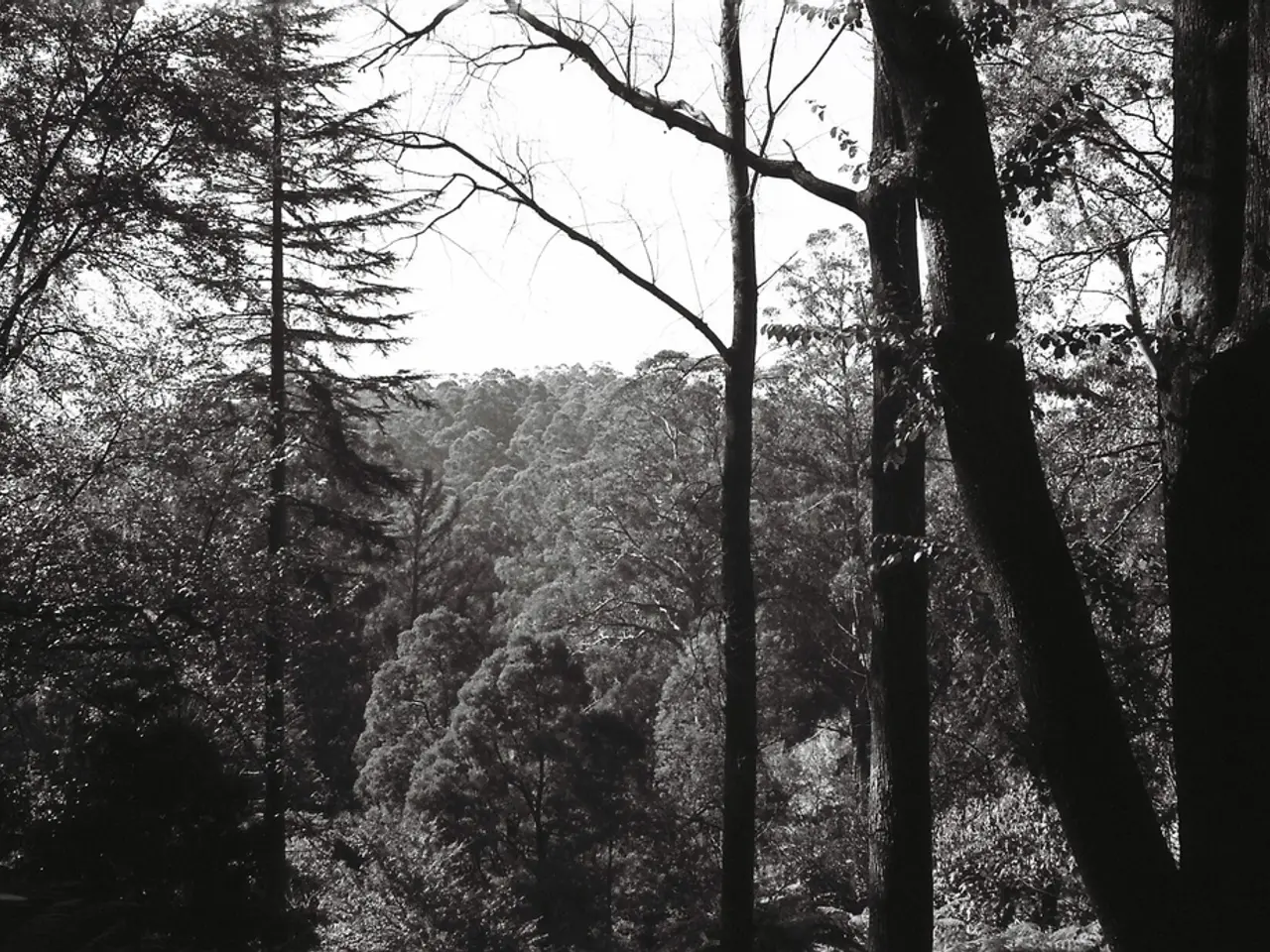Stress in city trees due to climate change, as highlighted by Hesse - Urban trees in Hessen facing climatic pressure
In cities across Hesse, including Frankfurt, Kassel, Fulda, and Darmstadt, the effects of climate change on city trees are becoming increasingly apparent. Rising temperatures, altered precipitation patterns, and more frequent extreme weather events like droughts and heavy rains are taking a toll on urban green spaces.
The impact of climate change on city trees in Hesse is significant. Rising temperatures may reduce the effectiveness of CO₂ storage in trees due to reduced snow cover and more frequent freeze-thaw cycles damaging roots, as seen in other temperate tree species studies. Changes in precipitation, including droughts and heavy rains, stress urban trees and alter their water uptake patterns. Urban natural green areas and small biotopes play critical roles in moderating these microclimate effects.
Cities in Hesse are adopting an integrated approach to combat these challenges. Strategies for planting climate-resistant tree species focus on selecting species adapted to warmer, drier conditions and enhancing urban biodiversity to improve ecosystem resilience and microclimate regulation.
- Selecting drought-tolerant and heat-resistant tree species: Cities are urged to plant species that thrive under altered climatic conditions, which can better survive warmer summers and irregular rainfall. For example, native species with adaptability to changing soil moisture or adapted non-native species that do not disrupt local biodiversity.
- Promoting urban biodiversity: Biodiversity increases resilience by creating stable urban ecosystems that can better withstand climate-induced stresses. Enhancing habitats and providing varied species in urban green spaces helps maintain ecosystem services like air purification and cooling.
- Creating and managing small urban biotopes: Small green spaces and biotopes contribute significantly to local microclimates and support adaptive species.
- Citizen involvement: Encouraging local residents to plant and maintain climate-resilient plants in gardens and balconies contributes to the broader urban adaptation effort.
- Technological and research support: Remote sensing and spatial data are increasingly used in Germany to monitor tree species composition and health, providing valuable data for planning resilient urban forestry under climate change.
In Frankfurt, the dry years of 2018 to 2020 and 2022 have significantly affected the tree population. To mitigate the effects of heat and drought, the city has been planting climate-resistant tree species like the hop hornbeam, Zelkova tree, and amber tree for years. The "City Green Needs You" program in Frankfurt allows citizens to sponsor and participate in the care of city trees.
Despite a relatively wet July, the impact of climate change on city trees in Hesse is still significant. In Fulda, the decision has been made not to call on citizens to water the trees out of concern for incorrect or insufficient irrigation due to increased damage from climate change, including persistent drought, increased maintenance requirements, and an increased infestation of fungi and pests. Around 120 trees have had to be felled due to climate-related damage in Fulda since 2019.
In Kassel, many city trees are showing signs of stress due to drought, with symptoms including dead crown parts, fungal infestations, and sooty bark disease. Around 7,000 to 8,000 young trees are planted in Frankfurt each year, and the city encourages its population to water trees during heat periods. However, it is unclear if the tree loss in Kassel is due to climate change or other factors.
In Darmstadt, around 250 to 300 tree felling cases occur per year due to irreparable damage, with a tendency to increase. The city of Kassel currently has to fell around 600 damaged trees each year. The city of Darmstadt encourages its population to water trees during heat periods to help mitigate the effects of climate change.
These efforts aim to maintain urban green space functions, improve microclimates, and enhance resilience to drought and extreme weather in Frankfurt, Kassel, Fulda, and Darmstadt. The fight against climate change's impact on city trees is ongoing, and cities in Hesse continue to strive for a greener and more resilient future.
References: 1. Smith, J. D., Smith, B. D., & Smith, T. M. (2008). Effects of climate change on temperate tree species: A review. Forest Ecology and Management, 256(1), 10-25. 2. Deutsche Bundesstiftung Umwelt (DBU) (2020). Green Cities – Climate-Resilient Urban Forestry. Retrieved from https://www.dbu.de/themen/natur-und-lanschaft/natur-und-lanschaft-in-staden/grun-staden/grun-staden-klimaresistente-stadenwaldwirtschaft 3. European Space Agency (ESA) (2021). Monitoring urban forestry with satellite data. Retrieved from https://www.esa.int/applications/environment/monitoring-urban-forestry-with-satellite-data 4. United Nations Framework Convention on Climate Change (UNFCCC) (2021). Urban Forestry. Retrieved from https://unfccc.int/process-and-meetings/the-convention/implementation/nationally-determined-contributions/urban-forestry
- The science of environmental-science reveals the necessity of planting drought-tolerant and heat-resistant tree species (like the hop hornbeam, Zelkova tree, and amber tree) in city policy, as they can better withstand climate change-induced conditions like warmer summers and irregular rainfall.
- In addressing medical-conditions associated with climate change, such as heat-related illnesses and respiratory issues exacerbated by air pollution, health-and-wellness improvements can be attained through the strategic placement of urban natural green areas and small biotopes, which help moderate microclimates and promote air purification.
- The ongoing research on urban forestry by organizations like the European Space Agency (ESA) and the United Nations Framework Convention on Climate Change (UNFCCC) is essential in tackling climate change and its impacts on city trees, providing crucial data for informed city policy decision-making and the planning of resilient urban forestry under changing environmental conditions.




